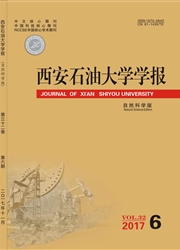

 中文摘要:
中文摘要:
断陷盆地低凸起带远离油源,来自洼陷中心的油气经沿途分流,多级输导运移至低凸起带,往往具有它源成藏、复式输导、多层系含油的特点,输导体系对油气运聚具有重要的控制作用。以济阳坳陷林樊家低凸起带为例,从油气分布规律入手,分析输导要素特征及其输导能力,建立了油气成藏模式,并探讨了不同输导要素对油气运聚的控制作用。研究表明,研究区发育2条油源断层,断层活动性和封闭性均呈现周期幕式变化特征,控制了"幕式空间分段输导"模式;研究区发育4种不整合上、下岩性配置关系,其中,不整合"天窗"为油气纵向分流的重要通道。在明确了输导体系及其有效性的基础上,结合油气分布,建立了林樊家低凸起带"断层沟通源储-不整合面分流-复式输导-多层系差异聚集"的油气成藏模式。油源断层的时空有效性控制了研究区的油源条件及不同层系油气的充注方式和充注范围,不整合"天窗"的垂向分流作用控制了不同层系油气的差异聚集特征。
 英文摘要:
英文摘要:
Taking Linfanjia low-uplift zone in Jiyang Depression as an example,starting with the hydrocarbon distribution pattern,the characteristics of hydrocarbon migration factors were analyzed,the hydrocarbon accumulation model in Linfanjia low-uplift zone was established,and the control effects of the hydrocarbon migration factors on the migration and accumulation of hydrocarbon were discussed.The research result shows that there are developed two oil source faults in the study area,and the change of fault activity and closure presents periodic episodic characteristic,which leads to the mode of " episodic spatial segmented migration". In addition,there are four types of unconformity lithological structure. Meanwhile,the unconformity " clearstory" plays an important role in the vertical migration of hydrocarbon. Based on the analysis of the characteristics and effectiveness of hydrocarbon migration systems and the characteristics of hydrocarbon distribution,the hydrocarbon accumulation mode of the study area is established,that is, " faults linking source and reservoir-unconformity shunting-multiple migration systems-accumulating in multiple layers". Furthermore,Time-space effectiveness of oil source faults controls the oil source condition and the filling pattern and range of hydrocarbon in different layers,while the vertical shunting of unconformity 'clearstory' controls different accumulation characters of hydrocarbon in different layers.
 同期刊论文项目
同期刊论文项目
 同项目期刊论文
同项目期刊论文
 期刊信息
期刊信息
